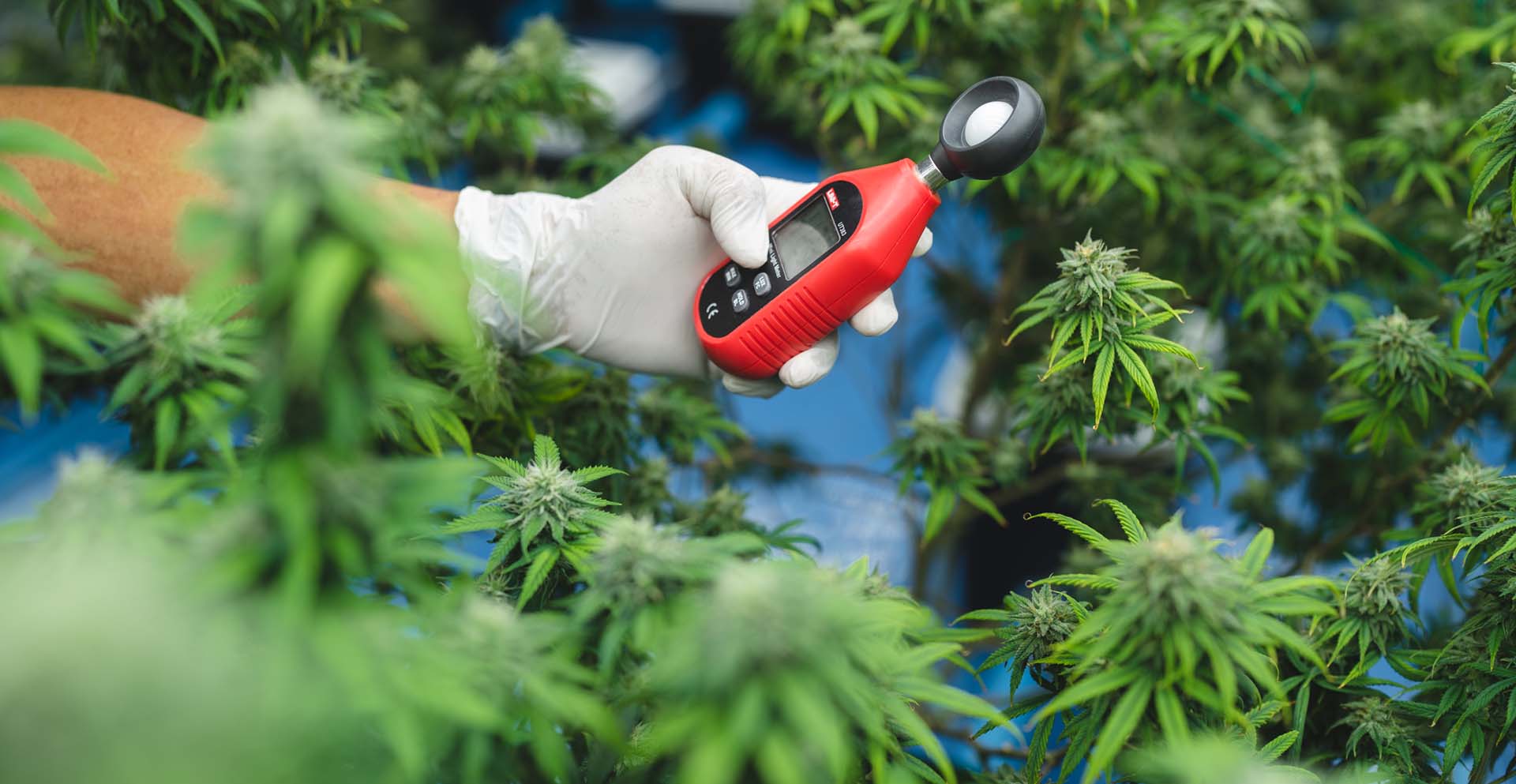Now accepting clients for New York, Maryland, Delaware, and Missouri! Please contact us if you have questions.
Cannabis Marketing Strategies for 2023
Table of Contents
Are you ready to tap into the booming cannabis market? Look no further than cannabis marketing and branding. This rapidly growing industry presents unique challenges and opportunities for cannabis marketers, as they navigate the ever-evolving landscape of laws and regulations. To succeed, understanding your target audience is crucial. Whether you’re promoting cannabis products or catering to the needs of cannabis businesses, building trust and credibility are key factors in crafting effective marketing strategies.
In this space, recreational cannabis use is on the rise, attracting a diverse range of consumers. From topical hemp and CBD products to a variety of offerings within the cannabis industry, there’s immense potential waiting to be harnessed. As a cannabis entrepreneur, marketer, or part of a dedicated agency, it’s essential to stay ahead in this dynamic market.
So, let’s explore the world of cannabis marketing together and discover how you can make an impact in this thriving industry.
Understanding and Staying Compliant with Cannabis Marketing Laws
Familiarizing yourself with local, state, and federal regulations is essential for compliant cannabis marketing. In the United States, the legal status of cannabis varies from state to state, making it crucial for businesses in the industry to understand the specific laws that govern their operations. By staying informed about these regulations, cannabis marketers can avoid potential violations while effectively promoting their products or services.
Adhering to advertising restrictions helps avoid legal issues and maintain a positive brand image. Many jurisdictions have implemented strict rules regarding how cannabis can be marketed and advertised. These restrictions often include limitations on where advertisements can be displayed, who they can target, and what claims can be made about the product’s benefits. By following these guidelines, businesses can prevent legal repercussions and build trust with both consumers and regulatory authorities.
Regularly staying updated on changing cannabis marketing laws ensures ongoing compliance. The landscape of cannabis legislation is constantly evolving as more states legalize its use for medical or recreational purposes. This means that marketers must remain vigilant in monitoring any updates or amendments to existing laws that may impact their advertising strategies. By engaging in continuous education and staying up-to-date with industry news, businesses can adapt their marketing efforts accordingly.
Understanding the legal framework surrounding cannabis marketing is crucial for navigating this unique industry successfully. While some states have embraced full legalization, others still impose strict regulations on the sale and promotion of cannabis products. It is essential for marketers to research and comprehend these laws thoroughly to ensure they are operating within the boundaries set by local authorities.
In addition to understanding general regulations, marketers should also pay attention to specific restrictions imposed by each platform or medium they utilize. For example, popular social media platforms like Facebook and Instagram have policies against promoting drugs or drug-related content. Being aware of these platform-specific rules will help businesses avoid having their accounts suspended or content removed due to violations.
To maintain compliance with advertising laws while still reaching their target audience, cannabis marketers can explore alternative marketing strategies. For instance, they can focus on educational content that informs consumers about the benefits and responsible use of cannabis. By positioning themselves as trusted sources of information, businesses can build credibility and attract customers without directly promoting their products.

Importance of Branding and Public Image in Cannabis Marketing
Developing a strong brand identity is crucial in the competitive world of cannabis marketing. With the industry rapidly growing, it becomes essential to differentiate your cannabis business from competitors. This is where branding comes into play, allowing you to establish a unique presence and create lasting impressions on consumers.
A well-defined brand identity helps cultivate brand awareness among your target audience. It enables customers to recognize and remember your products or services easily. By consistently reinforcing your brand vision through various channels, you can enhance customer loyalty and foster long-term relationships.
In the context of cannabis marketing, public image holds significant weight. Responsible messaging plays a vital role in shaping how consumers perceive your brand. Cultivating a positive public image not only builds trust but also establishes credibility within the industry.
To maintain a positive public image, it is crucial to prioritize quality in all aspects of your business. From product development to customer service, every touchpoint should reflect excellence and professionalism. By consistently delivering high-quality products and services, you can establish yourself as a reputable player in the cannabis market.
Consistency is key. Whether it’s your website, social media platforms, or packaging design, maintaining visual consistency ensures that customers can easily identify and connect with your brand. This recognition fosters trust and loyalty among consumers.
Moreover, consistent messaging reinforces your brand identity and values. Through strategic communication efforts, you can convey responsible cannabis use while debunking stereotypes associated with the industry. This approach helps normalize cannabis consumption for both medical and recreational purposes.
To illustrate the importance of branding and public image further:
A well-known cannabis company successfully differentiates itself from competitors by emphasizing sustainability throughout its operations.
Another example could be a CBD-infused skincare brand that prioritizes transparency by providing detailed information about their sourcing methods.
An edibles manufacturer may focus on promoting safe consumption practices through educational content and responsible packaging.
Developing a Successful Cannabis Marketing Strategy
Conducting market research enables targeted messaging to specific demographics within the cannabis industry.
To develop an effective cannabis marketing strategy, it is crucial for cannabis companies to conduct thorough market research. This involves gathering data and insights about the target audience, their preferences, behaviors, and demographics. By understanding the specific needs and desires of potential customers within the cannabis industry, marketers can tailor their messaging to resonate with these individuals.
Market research provides valuable information that helps businesses identify their target audience more accurately. It allows marketers to segment the market based on factors such as age, gender, location, and interests. Armed with this knowledge, they can create highly targeted campaigns that speak directly to different segments of the cannabis market.
Setting clear goals and objectives provides direction for an effective cannabis marketing strategy.
Before diving into any marketing activities, it’s essential for businesses in the cannabis industry to establish clear goals and objectives. These serve as guideposts for all marketing efforts and ensure that resources are allocated effectively. Without clear goals in place, businesses may find themselves engaging in scattered or ineffective marketing practices.
When setting goals for a cannabis marketing strategy, it’s important to consider both short-term and long-term objectives. Short-term goals might include increasing brand awareness or driving traffic to a website or dispensary. Long-term goals could involve establishing customer loyalty or expanding into new markets. By defining these objectives upfront, marketers can align their strategies accordingly.
Utilizing data analytics allows for continuous optimization of marketing efforts.
Data analytics plays a vital role in refining and optimizing cannabis marketing strategies over time. By analyzing key metrics such as website traffic, conversion rates, email open rates, social media engagement levels, and sales figures, marketers gain valuable insights into what is working well and what needs improvement.
With data analytics tools at their disposal, marketers can track the performance of various campaigns and tactics used in their cannabis marketing efforts. They can identify which strategies are generating the most leads, conversions, and sales. This information allows them to make data-driven decisions and allocate resources to the most effective marketing channels.
Leveraging Social Media Advertising for Cannabis Businesses and Brands
Social media platforms offer vast opportunities for cannabis brands to reach and engage with their target audience effectively. With the increasing legalization and acceptance of cannabis, it has become crucial for brands in this industry to leverage social media advertising to maximize their visibility and grow their customer base.
Creating compelling content that resonates with users is key to increasing brand awareness on social media. By understanding the preferences and interests of your target audience, you can tailor your content to capture their attention and encourage engagement. Whether it’s educational posts about the benefits of cannabis, behind-the-scenes glimpses into your brand’s cultivation process, or lifestyle-oriented content that showcases how cannabis fits into everyday life, finding the right balance is essential.
Utilizing paid advertising options on platforms like Facebook or Instagram can significantly boost visibility for cannabis brands. These platforms provide advanced targeting capabilities that allow you to narrow down your audience based on demographics, interests, and behaviors. By strategically placing advertisements in front of individuals who are likely to be interested in your products or services, you can increase the chances of converting them into loyal customers.
There are several advertising options worth exploring to reach cannabis consumers:
Search Ads: Running search ads allows you to appear at the top of search engine results when users are actively looking for information related to cannabis products or services. This form of advertising ensures that your brand is visible at the moment when potential customers are actively seeking information or making purchase decisions.
Social Media Advertising: Platforms like Facebook and Instagram offer robust advertising solutions tailored specifically for businesses. Through these platforms, you can create targeted ad campaigns that reach users based on their location, interests, and online behavior. Utilizing influencers and content creators within the cannabis community can help amplify your brand’s message and expand its reach even further.
Drip Campaigns: Implementing a drip campaign through email marketing can be a powerful tool for nurturing leads and converting them into customers. By sending a series of strategically timed emails that provide valuable information and incentives, you can build trust with your audience and guide them along the customer journey.
Digital Cannabis Advertising
For the majority of industries, digital advertising stands out as an exceptional and cost-efficient marketing avenue. However, the landscape differs when it comes to digital advertising in the medical and recreational marijuana sectors who are trying to reach cannabis users. This disparity arises from the fact that numerous prominent advertising and social media platforms, including Google, YouTube, Facebook, Instagram, and Twitter, have restrictions against hosting ads from cannabis or cannabis-related enterprises.
Yet, there’s a silver lining – this limitation doesn’t impede cannabis and cannabis-related businesses from delving into digital advertising. The path may require a bit more effort and potentially incur higher costs compared to the pay-per-click ad networks that thrive in other sectors, such as Google AdWords and Facebook Ads.
Outlined below are three optimal strategies for your cannabis venture or cannabis-related enterprise to enhance brand recognition, cultivate leads with cannabis users, and augment sales through digital advertising, all while navigating the existing challenges.
Programmatic Advertising
Utilizing programmatic advertising emerges as a cost-effective avenue for businesses seeking to position their ads on platforms that embrace cannabis and cannabis-related brand promotions. This approach establishes a rendezvous between advertisers and online publishers within a shared digital realm, facilitating the purchase and sale of advertising space through an automated framework.
For cannabis brands, automated cannabis ads offers a time-saving advantage by eliminating the need to dedicate hours or even days scouting for websites amenable to cannabis-related ads and engaging in fee negotiations. The entire process is efficiently managed by the platform itself. Moreover, these platforms yield cost efficiencies as they leverage artificial intelligence to strategically bid on ad space. This ensures your ads are showcased to the right audiences at the right times and for the right costs.
Delving into programmatic advertising opens up a realm of advantages for cannabis and allied enterprises. These encompass sophisticated targeting capabilities, heightened tracking mechanisms, tools tailored to reaching fresh demographics, and more. Although several prominent programmatic advertising platforms remain inaccessible to cannabis and related businesses, there are exceptions that extend their arms to the cannabis industry. Notably, there are platforms exclusively designed for the cannabis sector, such as Mantis and Traffic Roots.
Podcast Advertising
Based on The Infinite Dial 2022, an annual study conducted by Edison Research, podcasts have a reach of 109 million Americans aged 12 and above every month. Within this audience, slightly over half of the listeners are men (53%), while approximately half are women (46%).
Interestingly, the demographic of podcast listeners skews younger than one might assume. The study indicates that 50% of Americans aged 12 to 34 engage with podcasts on a monthly basis, in contrast to 43% of individuals aged 35 to 54, and 22% of those aged 55 and older.
This data strongly indicates that podcast advertising provides a practical avenue for cannabis and ancillary businesses to effectively engage with their intended audiences, encompassing both B2B and B2C interactions.
With this insight in mind, it’s advisable to seek out podcasts centered around cannabis or related topics, as well as podcasts that align with the interests of your target demographics. Initiating contact with these podcasts and exploring the possibility of featuring your business, brand, products, or services in advertisements during their shows, on their websites, or as show sponsors can be a strategic move.
Advertising on Websites and Blogs
Captivating cannabis-related blogs and websites not only attract a fitting audience, but also open doors to digital advertising opportunities. For instance, these platforms offer diverse advertising formats, including banner ads, video ads, text ads, newsletter features, and more.
Among the noteworthy sites where both cannabis industry players, ranging from business-to-consumer (B2C) to business-to-business (B2B) enterprises, can effectively showcase their offerings are Leafwire, Ganjapreneur, CannaSOS, Cannabis Business Executive, Leafly, MJBizDaily, and New Cannabis Ventures.
Yet, it’s essential not to confine your advertising efforts solely to cannabis-centric blogs and websites. Research underscores that 77% of internet users engage with blogs, which encompass a broad spectrum of subjects beyond cannabis. Your desired audience frequents a variety of online destinations, so it’s worthwhile to explore different blog niches and platforms that resonate with them. These avenues might serve as prime spaces for your advertising endeavors.
For example, if your enterprise specializes in cannabis edibles, scouting for health and wellness blogs and websites could be advantageous. Conversely, if your target market comprises cannabis license holders—dispensaries, cultivators, and manufacturers—focusing on business-oriented blogs and websites becomes paramount. These platforms are likely visited by your audience seeking insights and staying updated on relevant industry developments and news.
Newsletter Email Marketing for the Cannabis Industry
Numerous online publishers engage their subscribers through email newsletters while capitalizing on these newsletters through advertisements and sponsorships. This dynamic presents a golden opportunity for cannabis enterprises and those related to the industry to position their brands before an engaged and intrigued audience.
Exploring cannabis-centric platforms such as Cannabis Business Executive, Ganjapreneur, and New Cannabis Ventures highlights the availability of advertising opportunities for businesses within the cannabis realm. These avenues extend to featuring your brand in email newsletters or employing targeted email marketing campaigns. With subscriber bases numbering in the thousands or even tens of thousands, these email newsletters hold the potential to drive leads and catalyze sales for your venture.
It’s essential to acknowledge that email newsletter advertising typically carries a higher cost compared to blog or website advertisements. Nonetheless, embarking on this avenue warrants consideration, as it allows you to assess and compare the outcomes against your broader digital advertising investments, thus offering valuable insights into your marketing strategy’s effectiveness.

SMS Text Marketing for Dispensaries
SMS marketing can be a valuable tool for dispensaries to communicate with their customers. Here are some benefits of SMS marketing for dispensaries, as found in the search results:
High Open and Click Rates: Text messages have an extremely high opening rate, which leads to higher ROI for SMS marketing campaigns [5]. SMS marketing features a 98% open rate and 90% click rate [3].
Personalization: Dispensaries can use data-driven insights to segment customers into groups based on their preferences and buying patterns. This allows for personalized messages and targeted promotions, which can lead to higher retention rates [2].
Increased Sales: SMS and MMS messaging can influence buying patterns among cannabis consumers and incentivize them to buy more [2]. Notification of weekly sales or discounts, integration with loyalty programs to remind customers of their benefits, and introducing new products or services are some popular use cases for cannabis SMS marketing [6].
Brand Awareness and Loyalty: SMS marketing can enhance brand loyalty and awareness, and recapture lost customers [3]. Interesting news or links to blogs, referral program reminders, and compliance updates are some other ways dispensaries can use SMS marketing to build brand awareness and loyalty [6].
Compliance: Like most retail industries, cannabis consumers must opt-in to receive dispensary text messages [3]. Dispensaries must also comply with regulations around SMS marketing, such as including opt-out instructions in messages [3].
Overall, SMS marketing can help dispensaries meet their customers where they are at and communicate with them in a way that is personalized, effective, and compliant.

Content and SEO Strategies for Effective Cannabis Marketing
Producing high-quality content is a crucial aspect of successful cannabis marketing. Whether you are running a website or blog, creating engaging and informative content can attract organic traffic and help establish your brand as an authority in the industry. By focusing on education, entertainment, or problem-solving, you can capture the attention of potential customers and keep them coming back for more.
Optimizing your website’s content using relevant keywords is essential for improving search engine rankings. When users search for cannabis-related topics, you want your website to appear at the top of the results page. Conduct thorough keyword research to identify popular terms that resonate with your target audience. Incorporate these keywords strategically throughout your content to increase visibility and drive organic traffic.
In addition to keyword optimization, incorporating backlinks from reputable sources can greatly enhance your credibility and authority in the eyes of search engines. When other websites link back to your content, it signals to search engines that your information is trustworthy and valuable. Seek opportunities to collaborate with industry influencers or guest post on established platforms within the cannabis community. These backlinks not only boost your SEO efforts but also expose your brand to a wider audience.
An effective cannabis marketing strategy should also include well-designed landing pages that convert site visitors into customers. Landing pages serve as entry points for potential leads who have clicked on specific calls-to-action or advertisements. To ensure maximum conversion rates, create compelling headlines, clear and concise copy, visually appealing graphics or videos, and persuasive calls-to-action.
Website design plays a significant role in attracting and retaining site visitors. A visually appealing layout with easy navigation enhances user experience while encouraging users to explore further. Ensure that your website loads quickly across different devices and browsers, as slow-loading sites often lead to high bounce rates.
To engage site visitors effectively through organic content marketing strategies:
Utilize personal pronouns: Address readers directly by using “you” instead of speaking in a generic manner. This creates a sense of connection and makes the content more relatable.
Use the active voice: Active sentences are more engaging and direct compared to passive ones. They create a stronger impact on readers, keeping them hooked throughout the article.
Incorporate rhetorical questions: Pose thought-provoking questions that encourage readers to reflect on their own experiences or opinions related to cannabis marketing. This technique fosters engagement and encourages further reading.
Analogies and metaphors: Use creative comparisons to simplify complex concepts or make your content more memorable. Analogies help readers grasp new ideas by relating them to familiar concepts.
By implementing these content and SEO strategies, you can effectively market your cannabis business while establishing yourself as an authority in the industry. Remember, producing high-quality, engaging content is key to attracting organic traffic, optimizing search engine rankings, and ultimately driving conversions for your brand’s success.
Navigating Everchanging Cannabis Regulations and Industry News
Staying informed about evolving regulations is crucial for businesses operating in the cannabis industry. With laws and guidelines constantly changing, it’s essential to adapt marketing strategies accordingly to ensure compliance and maximize opportunities. Here are some key points to consider when navigating everchanging cannabis regulations and industry news.
Regularly monitoring industry news and trends allows businesses to stay ahead of the curve. By keeping a close eye on the latest developments, companies can make timely adjustments to their marketing campaigns. For example, if a new regulation is introduced that affects how dispensaries can advertise their products, being aware of this change early on enables businesses to modify their messaging and promotional efforts accordingly.
Engaging with industry associations and networks provides valuable insights into the latest developments. These organizations often have access to information before it becomes widely available, allowing businesses to stay informed about upcoming changes or potential challenges. By actively participating in these networks, companies can gain knowledge from others who have faced similar regulatory hurdles or found innovative ways to navigate them.
User experience plays a significant role. Ensuring that your website is user-friendly and complies with relevant regulations is essential for attracting customers while staying within legal boundaries. Providing an intuitive navigation system, clear product descriptions, and easy access to information such as different strains available at your dispensary will enhance the overall user experience.
One effective strategy is creating educational content through a blog or guide section on your website. This not only helps educate customers about the benefits of cannabis but also positions your business as an authority in the industry. However, it’s important to ensure that any information provided aligns with current regulations and does not promote illegal activities.
Another aspect of navigating everchanging cannabis regulations involves understanding state-specific rules. Since regulations can vary significantly from one state to another, it’s crucial for businesses to familiarize themselves with the specific guidelines applicable in each location they operate in. This includes understanding restrictions on advertising channels, packaging requirements, and limitations on the sale of certain products.
To reach a wider audience, businesses should explore different marketing channels. While social media platforms like Facebook and Instagram have restrictions on cannabis-related content, there are other avenues to consider. For instance, email marketing campaigns can be an effective way to engage with customers and provide updates about new products or promotions. Partnering with influencers who specialize in cannabis-related content can help increase brand visibility.
Maintaining an updated inventory is essential for compliance with regulations and meeting customer expectations. By regularly reviewing your inventory and ensuring accurate product information is available on your website or online ordering platform, you can avoid potential issues such as promoting out-of-stock items or displaying inaccurate pricing.

Key Takeaways for Successful Cannabis Marketing
Successful cannabis marketing requires a deep understanding of the industry’s regulations and laws. Staying compliant is crucial to avoid legal troubles and maintain a positive brand image.
Branding and public image play a significant role in cannabis marketing. Establishing a strong brand identity helps differentiate your business from competitors and build trust among consumers.
Developing a well-thought-out cannabis marketing strategy is essential for long-term success. This includes identifying target audiences, setting clear goals, and implementing effective tactics to reach potential customers.
Leveraging social media advertising can be highly beneficial for cannabis brands. Platforms like Facebook, Instagram, and Twitter offer targeted advertising options that allow you to connect with your ideal audience.
Content creation and search engine optimization (SEO) strategies are vital components of effective cannabis marketing. By producing valuable content that educates and engages consumers, you can improve your online visibility and attract organic traffic to your website.
Navigating the ever-changing landscape of cannabis regulations and industry news is crucial. Staying informed about new developments will help you adapt your marketing strategies accordingly.
To succeed in the competitive world of cannabis marketing, it’s important to stay up-to-date with the latest trends, techniques, and best practices. Embracing innovation while maintaining compliance will set you apart from the competition.
In summary, successful cannabis marketing involves understanding regulatory requirements, building a strong brand image, developing a comprehensive strategy, leveraging social media platforms effectively, implementing content and SEO strategies, staying informed about industry news, regulations & trends. By following these key takeaways, you can position your cannabis brand for success in this rapidly growing market.
Frequently Asked Questions – Cannabis Business Marketing
How can I ensure compliance with cannabis marketing laws?
To ensure compliance with cannabis marketing laws:
Familiarize yourself with local regulations
Work with legal professionals experienced in the cannabis industry
Stay updated on changes to laws and regulations
Why is branding important in cannabis marketing?
Branding helps differentiate your business, build trust, and create a memorable identity. It allows you to establish a unique position in the market and connect with your target audience.
How do I develop an effective cannabis marketing strategy?
To develop an effective cannabis marketing strategy:
Identify your target audience
Set clear goals and objectives
Research competitors and industry trends
Choose appropriate channels and tactics
Continuously evaluate and adjust your strategy as needed
How can social media advertising benefit my cannabis brand?
Social media advertising offers targeted options to reach specific demographics, allowing you to connect with potential customers. It can increase brand visibility, drive website traffic, and generate leads.
What role does content play in cannabis marketing?
Content plays a crucial role in educating consumers, building credibility, and improving search engine rankings. By creating valuable content that addresses customer needs, you can attract organic traffic to your website.
How do I stay informed about changing regulations and industry news?
To stay informed about changing regulations and industry news:
Follow reputable industry publications
Join relevant associations or organizations
Attend conferences or webinars focused on the cannabis industry
What steps should I take to succeed in the competitive world of cannabis marketing?
To succeed in the competitive world of cannabis marketing, there are a few steps you should take. First, it’s important to do some research and learn about the laws and regulations surrounding cannabis in your area. This will help you understand what you can and cannot do when marketing cannabis products.
Next, you should identify your target audience and create a marketing plan that caters to their needs and interests. This could include using social media platforms like Instagram or Facebook to reach potential customers.
Additionally, it’s important to stay up-to-date with the latest trends and developments in the cannabis industry so you can adjust your marketing strategies accordingly.
Finally, don’t forget to track your results and make adjustments as needed to ensure your marketing efforts are effective. By following these steps, you’ll be on your way to success in cannabis marketing.
Need help with Cannabis Marketing?
Start implementing these key takeaways today to elevate your cannabis marketing game. Be sure to ask how our in-house branding and marketing agency can help you!
More To Explore





























